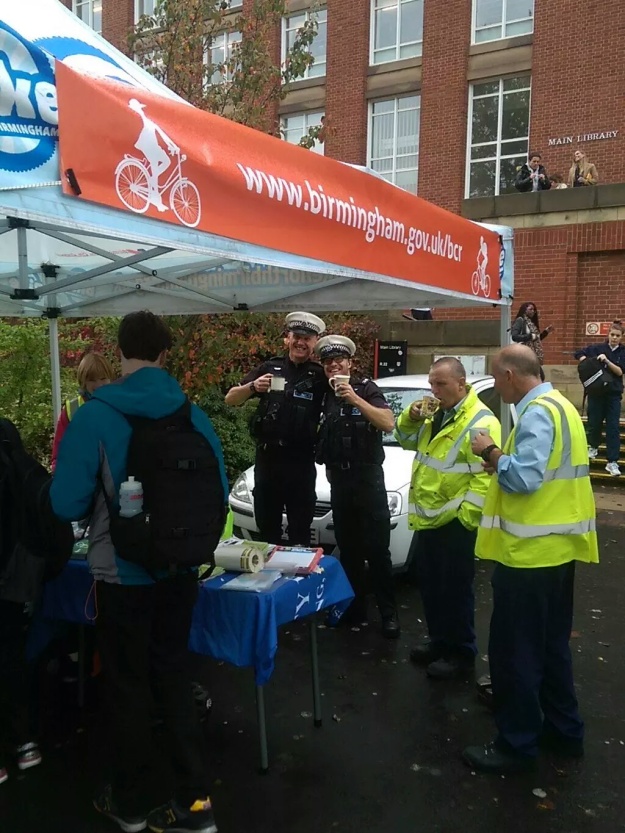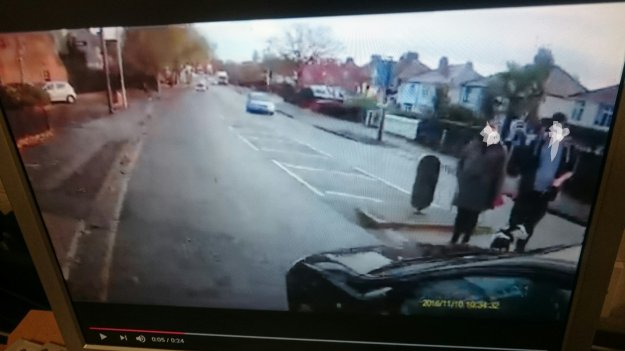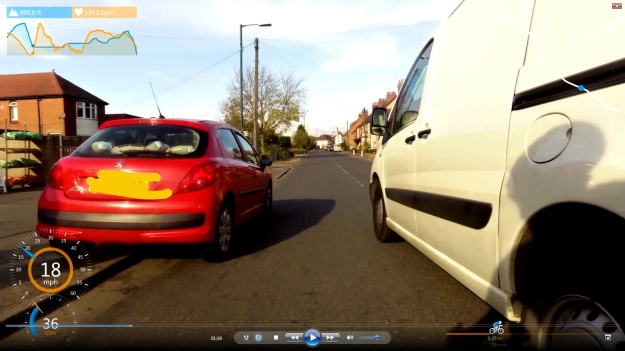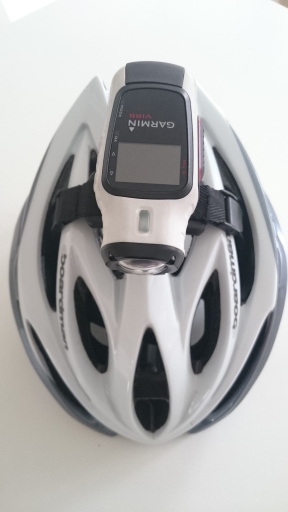A corner turned, a long road ahead
Fruitcake, yes you’re probably going to need a good filling fruitcake for this one, and a nice cup of tea, definitely should accompany fruitcake with a nice cup of traditional tea….followed by a little cheese….and maybe a small glass of warming port…..welcome to the next Safer Cycling blog

Never happier than with tea, and a bit of cake…..Hudson and Hodson
We’ve been busy, we’ve been very busy, what started as a conversation between two traffic officers and one member of the Birmingham Cycle Revolution Team over a cup of tea and some chocolate bunnies (yes it was Easter !!), followed by a few hastily drawn sketches 20 minutes later of an educational road mat, Operation Closepass #GiveSpaceBeSafe has now become a huge thing, a huge work generating quite awkward thing. Awkward you may ask, why awkward? Well it was rather well received, all of sudden we were receiving praise and some might say being “liked” which is rather discomforting for traffic officers, as we are somewhat conditioned to being disliked and receiving negative feedback. After all we are not the smiley happy branch of the modern police force, we are the spreaders of misery and gloom generally among the road going populace, the dour faced donut eating aviator wearing, Road Traffic Act preachers of doom. So the positive feedback and support for our first tender new steps in a new direction have left us standing around, blushing slightly with our hands behind our backs whispering things like “well this is all a little unnecessary, we’re only doing what we are paid to do”. Overnight what the officers involved did on a daily basis changed dramatically, there have been no rest days since the start of September, the phones have rung every day, whether it’s our press department, journalists, editors of TV shows or just the interested public the demand has been off the scale. At the same time normal policing has had to continue, those officers involved drive a traffic car 24/7, doing what traffic officers are normally deemed to do, you know that “police Interceptors or road wars” type of thing, you know the drill. So everyone involved, including the supervision are a little bleary eyed but thankful of the great support received from all parts of the road going community, we are also thankful for the negative feedback received from some members of the public and press, your response which was in the minority, strengthens our faith that we have made the right decisions in order to make our roads and communities safer, thankyou, after all you were most likely our primary target audience, and now you’re aware so there can be no excuses…….we don’t care what you think, a life is a life, the law is the law, it’s all a matter of priorities, get used to it, it’s the future.
Then in the midst of this success driven cacophony of chaos there’s two officers who sit deep in conversation, which when not dominated by Star Wars conspiracy theories, comic books, Op Hercules tactics (an illegal street racing operation, their other project), and their somewhat eclectic music tastes, goes something like this “ Well that went rather well” “Well yes we always knew it would, we just needed the opportunity” “What next then” “More of the same I suppose” “Got the book” “Of Course” and out comes the book of Blue Sky Thinking Road Safety Ops (yes it really does exist !) as you see #OpClosepass #GiveSpaceBeSafe was just the first of what will be hopefully a string of CMPG Roads Policing initiatives centred on the safeguarding of our vulnerable road users. Then there follows cake and a beverage or two…..as the next plans are hatched to promote improved, safer driving and enforce the law against those who endanger others daily.
Close Pass update
Op Closepass has been a success, that’s all you can say really. It was cost neutral, just part of our everyday patrols. We have used officers own bikes, equipment and also Cycliq kindly gave us Fly cameras to test, so it cost nothing. It was well received, and most importantly had an immediate impact. Within a week cyclists were contacting us to tell us things had had not only improved, but improved considerably, there were still close passes, always will be, “can’t get them all”, but they have become a rarity rather than commonplace. We noticed the difference, having to move locations on press days as our usual preferred spots now harboured good driving habits, we were literally starting to struggle to find a volume of offences to deal with. Admittedly the huge press attention helped, but if our future efforts to protect vulnerable road users have half the impact that this operation has had we will be guaranteed success each time. Don’t get us wrong, we know there is still a mountain to climb, but if a mountain climbing analogy was needed, let’s just say we’ve got the equipment and made base camp, where we currently enjoy cake and a beverage before pushing on to the lower slopes. The summit, a view from which we can see a land where we let our loved one’s take part in their journey’s as vulnerable road users without undue worry is still sadly out of sight, but hopefully someday soon we will see the view of this promised land. Until then we continue climbing the mountain…..

Excuses, excuses………..
Feedback from offenders has been good, 99 % of the time. Some of the excuses not so good, but they left with the knowledge and change in perception necessary to firstly be aware of, and then overtake or account for cyclists on the road safely in future. Some said they hadn’t seen the cyclist at all, maybe in the belief that it was better to say this than admit poor driving judgement, both don’t bode well regards their everyday driving ! But they were caught, and hopefully reformed before their poor driving harmed another. The 1% have left with a piece of paper that is titled “Traffic Process Report”, no further explanation is needed, they failed to show not only the driving skills necessary but also the aptitude to guarantee belief they won’t endanger a vulnerable road user again. This 1% of course does not include those who were ruled out of the immediate educational input due to additional offences. These drivers would include those with no tax or insurance, those on the phone, the lady putting her dog back in its cage, the man reading the delivery note in one hand whilst holding his phone in the other…..you think of it, we’ve had an offender who can make your worst road going nightmare come true !
This is why Op Closepass works so well, it targets and catches those who endanger the vulnerable on a daily basis, tens of thousands of drivers have encountered and overtaken our cyclists displaying all the attributes necessary to be not only safe and competent drivers but at times exemplary, we have seen some fantastic driving and although you will never know, if we could stop you and shake your hand we would, unfortunately we still have too many poor drivers to occupy our time at the moment….
But on a side note we always thought that what if in every book of tickets at the back there was a gift voucher that we could give out to particularly good drivers or riders we encountered, that would be novel wouldn’t it. Would people change their driving or riding in the hope that they might get caught being “good”…..(no boss I haven’t drank all the port having finished the fruit cake and cheese 😉
What is apparent from Op Close Pass is how little attention drivers actually pay to what is going on around them. This is because of a number of factors but primarily because drivers have little to fear when it comes to their own personal safety on the road. The modern motor vehicle is a fine feat of engineering, it can be driven into a brick wall at 50mph and the occupants can walk away relatively injury free. This “security” has however endangered vulnerable road users where it protects the driver. Drivers with their subliminal feeling of safety relax, pay less attention, start practicing poor driving, they speed, don’t pay attention, all to the detriment of vulnerable road users. This modern day wholesale rapid decline in driving standards combined with ever increasing traffic volume has inevitably seen vulnerable road users bear the unfortunate brunt of this driving trend. As we try to fit an increasing amount of traffic onto the same amount of road the chances of conflict increase proportionally. Factor in the declining amount of attention paid by drivers and the declining standard in driving and it’s only the vulnerable who are threatened. Vulnerable road users instinctively pay more attention, it’s only natural, vulnerability hones the senses. Vehicle drivers cocooned in their protective shells do the exact opposite, they pay less and less attention, to both other road users and road laws.
Falling levels of enforcement have a part to play in this trend, we know this, our last department leader Chief Supt Keasey, now moved onto pastures new stated exactly this to the transport select committee who agreed. You don’t have to be a road safety expert to realise that those with very little chance of being caught will continually offend, that’s why we are determined to utilise our time and talents where they have the most impact, targeted intelligence led enforcement. This combined with greater opportunities for third party reporting should reverse the trend and hopefully see an improvement.
What next
Op Close will is now an everyday part of our workstream, as it should be, its value increasing with each deployment, additional “value adding” offences are being identified, and the operation is continually being honed to be more effective. Locations in Coventry, Solihull and West Bromwich are all pencilled in for attention. We are constantly evolving the Operation, in this New Year we will hopefully be joined by staff from the West Midlands Fire Service Cycle Safety Team, who will deliver the 15 minute educational input instead of one of our officers. Why the change you might ask?, well for a start it frees up our officer to deal with the “other” offences that the operation is detecting in ever increasing numbers. Secondly our partners in the Fire Service come without the “baggage” that some associate with the police and so the educational input is better received.
New bespoke operations concentrating on distracted drivers and also protecting schoolchildren and the elderly on their pedestrian journeys are being approved in the same vain as Op Closepass. Our favourite analyst Chris has worked his magic once again and has been duly rewarded with calorific carbohydrate mood enhancing treats (otherwise known as chocolate biscuits). One lowlight of the analysis was the finding that over a third of pedestrian KSI’s occurred on or at pedestrian crossings…which again begs the question what are drivers paying attention to at such vulnerable locations…

Our analyst Chris has been busy again, as has PC Hodson who doodles when thinking!
Birmingham’s 20mph limits are now old news, which means every driver should be aware and complying, to ensure they are we will be out doing what we do best, enforcing the law in these areas. There is really no excuse for speeding, no-one seems to do it on their test………, we’ll be out there with the speed gun, every willing participant will leave with a piece of paper, resulting in a fine and points or an educational course, for those who might disagree with speed checks, read this https://trafficwmp.wordpress.com/2016/04/25/cash-cows-stealth-taxes-and-revenue-raisers/ and if you still disagree, well then you really shouldn’t be the road at all !
These new operations primarily designed to protect pedestrians will of course naturally protect all other vulnerable road users as they significantly concentrate driver’s attention in the most vulnerable of areas. It all supports our regions latest transport plans, and rightly so, after all our communities rightly deserve cleaner, healthier and enjoyable transport opportunities, it’s our job to create an environment which enables safe worry free participation, and as we all know that means curtailing the behaviour of those road users who endanger vulnerable road users, only then will our regions transport goals be achieved.
As we have said previously we will concentrate on those offences and offenders who pose the greatest threat of harm to others, our analysts will help pinpoint locations and also shape our tactics. For example although we like to be highly visible as it has crime prevention and reassurance benefits, if a particular road safety problem requires a covert approach we will use it, offending drivers are going to have to get used to the reality that we will use every tool at our disposal to save lives on our roads.
We aim to rely ever increasingly on our road safety partners to deliver what we term “soft education”, the educating in schools, youth and faith groups, the exchanging places scheme etc. We realise that we, traffic officers are becoming an ever increasing rare and valuable resource, and so our time needs to be spent doing what we do best, enforcing the law and delivering “hard education” as seen in Op ClosePass.
Third party footage prosecutions
Much like #OpClosepass, third party footage prosecutions have now become the “norm” for ourselves. The numbers of close pass due care offences we receive have dropped by about 50% since the #GiveSpaceBeSafe initiative took effect on our regions roads, we still get the same amount of red light, mobile phone and other offences via third party footage though, no change there yet! Ultimately Op Closepass will be judged on KSI figures and the increase in the number of people cycling, and rightly so, but what is certain is that to succeed it must run alongside a good easy to use and successful 3rd party reporting scheme. We believe we have achieved this to the point where offenders are starting to realise there doesn’t need to be a police officer present and witnessing for their offending to be detected and punished, that element of doubt put in a potential offenders mind works wonders, the psychology of offending is a wonderful thing and easily manipulated as soon as the threat of potential continuous detection is introduced.

Third party video prosecutions, protecting all road users not just cyclists
The one thing third party reporting has brought to the fore is that the majority of good law abiding road users, not just vulnerable ones, want the opportunity to report poor road use or offending and see it acted upon . This stream of offence detection and prosecution really will have a large part to play in the future of road safety, after all we can’t be everywhere at once to deal with offending on our roads, but given the ever increasing traffic levels and the spread of vehicle born cameras, there will always be someone with the right intentions waiting to do the right thing. We are still awaiting our digital reporting portal, this should make the process easier and encourage more to participate, but we have literally stopped counting how many road users we have prosecuted now using 3rd party footage, it’s just normal policing and will pay a large part in future efforts to make our regions road network safer for all.
It’s not all been going to plan though, we have had at least one report made to the traffic process office that wasn’t dealt with in the correct manner, this was a mistake made and apologies have been made, Processes have been put in place to ensure that it doesn’t happen again, like we said at the start “base camp achieved, the summit is a long way off”.
A Thankyou

Smiling, twice in one blog, that’s a record for traffic officers !
As many will be aware we were given an award for our efforts by the Road Danger Reduction Forum and had a great evening at the House of Lords enjoying the company of many who are as passionate as ourselves when it comes to saving lives on our roads. As I wrote earlier, we are not used to praise from outside our organisation, it is quite alien to ourselves, we are grateful to all those who support us and our work. We really couldn’t do it without you and even though we have an exceptionally supportive management team right the way up to our Chief Constable, it is reassuring to know for both them and ourselves that our efforts are well placed and valued.

We would love to personally thank whoever sent these choccies but the card had no details, but if your reading “Thankyou”, carbohydrate based mood enhancement is always appreciated, good fuel for the Operation as well !

Thankyou to Safe Cycling Eire for the goodies, this will appear as part of #OpClosePass in the very near future
So to all those who have supported with kind words, sent kit to use or chocolate to fuel the Op Close Pass cyclists, thankyou.
“Shine a light”
For the last two years we’ve tackled the issue of unlit cyclists by having the now well used “alternative” to prosecution approach of giving away light sets provided by Birmingham City Council and local Universities. We have dealt with over 400 offences in this fashion. We don’t have special events or targeted operations anymore, we carry a few sets of lights in our kit bags and deal with offences as we come across them. What we do notice as that most offenders participating in the scheme are teenagers or from newly arrived communities and are apparently unaware of the law attaining to lights on cycles at night. Both groups often have never had any cycling training or road law input. Many of the teenagers or young adults are of a generation that had no “Bikeability” training or the like during their school years. Now with the widespread use of “bikeability” type training both in schools and in all areas of our community’s, hopefully this should be slowly addressed and we should find ourselves giving away fewer sets of lights.
The rise in numbers of these offending groups however only shows how cycling groups that aren’t really accounted for under the usual statistics are on the rise, which is a great positive for the future of cycling.
“Illuminating Stuff”

Two up front, three behind
Want a little advice on lights well this is our take on what’s best.
- A steady light is better than a flasher but if you can have both then that’s the best option. The combination of the 2 provides attention, and the 2 lights even with one being a “flasher” are better for the eye to track making judging speed and direction easier for the observant motorist or pedestrian.
- Two to the rear is also the best option, again for the same reasons as above and if you can place them on differing axis i.e. one on the seatpost and one on a chainstay or seatstay again the effect is enhanced.
- Position so as not to “dazzle or blind” other road users. Most quality front cycle lights are better than the lights on some scooters, position for best road illumination but also be considerate.
- Two lights to the rear and fore also cater for a light or battery failure. Personally I have two front lights and 3 to the rear.
- Beware the “Halo” effect. At night you can become very hard to see no matter how well you are lit if you have a bright light very close to the rear of you, i.e. if a following vehicle has its main beams on or an inappropriately fitted bulb and is tailgating you or uncomfortably close not giving room to the rear. On the approach to junctions this can be particularly problematic. If the following vehicle flicks on an indicator and turns left the waiting vehicle might exit the junction not having seen you in front of the turning vehicle as you can become hidden in the “glare” of the vehicle’s lights behind. Although this set of circumstances is thankfully extremely rare you can combat any such effect by moving out from the nearside to an almost prime position, so your light doesn’t get lost in the “Halo” effect of the following cars lights, also an “flasher” can help getting you noticed in high traffic volumes with many lights to get “lost” to the attention in.
- If you look directly at a driver with a helmet mounted light on you can be effectively shining a light in their eyes, save the bright helmet lights for the trails, a simple single low level led flasher on your helmet does the trick nicely on the road if you want a light on your helmet.
- Nothing to do with lights but when it comes to clothing at night remember reflectivity is the key. Black kit covered in Scotchlite or similar is far more effective than hi vis with none.
- And remember, you could be as easy to see as a supernova exploding in your neighbour’s garden, but if another road user is distracted by their phone, lunch or whatever else they prioritise above your wellbeing they won’t see you because they aren’t looking. Ride defensively always, think the worst of everyone and prepare for the unexpected, give yourself time and space to react wherever possible, that’s the mind set we use in our road use, at work and at home, unfortunate but necessary until we reach the “mountain summit”.
Time for a coffee and a mint, nearly finished !
Well that’s it for now, we recommend reading the next Traffic Blog which will be published in a couple of weeks, it will concentrate on our efforts to prevent pedestrian KSI’s but will include measures that will keep all vulnerable road users safe. Expect more Op ClosePass updates as the year progresses. On 13th January we are holding a Close Pass forum to spread our mindset more than anything when it comes to protecting vulnerable road users, we will of course be covering the practicalities of the operation also for those attending. The actual Operation is easily replicated, changing decades of thinking and resulting practice which is now largely inappropriate given the transport and associated road safety issues we collectively face as a nation is a much harder task……mountains to climb you see…….cake to eat……port to…..I’ll stop there.
Safe Cycling All.











































